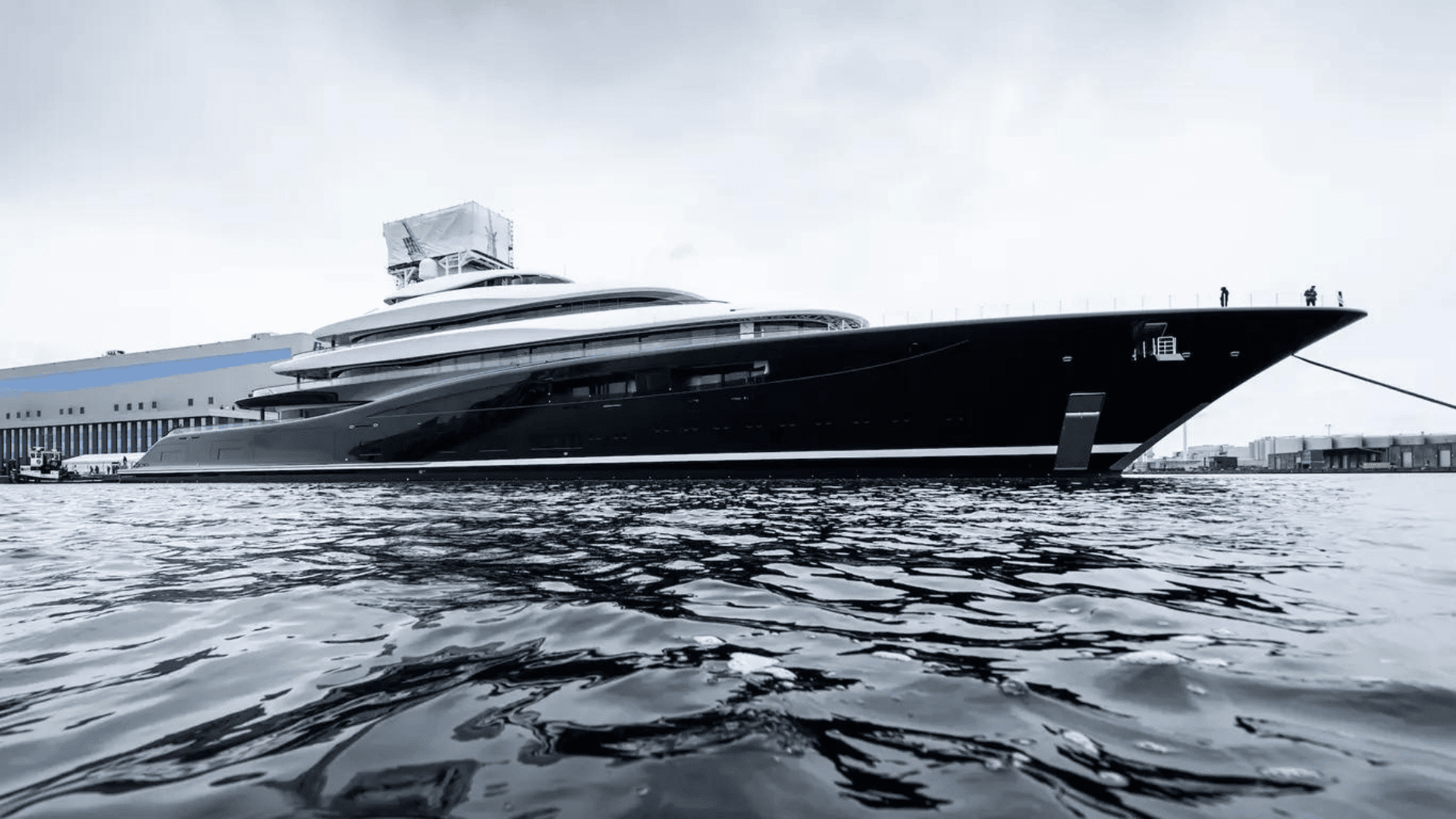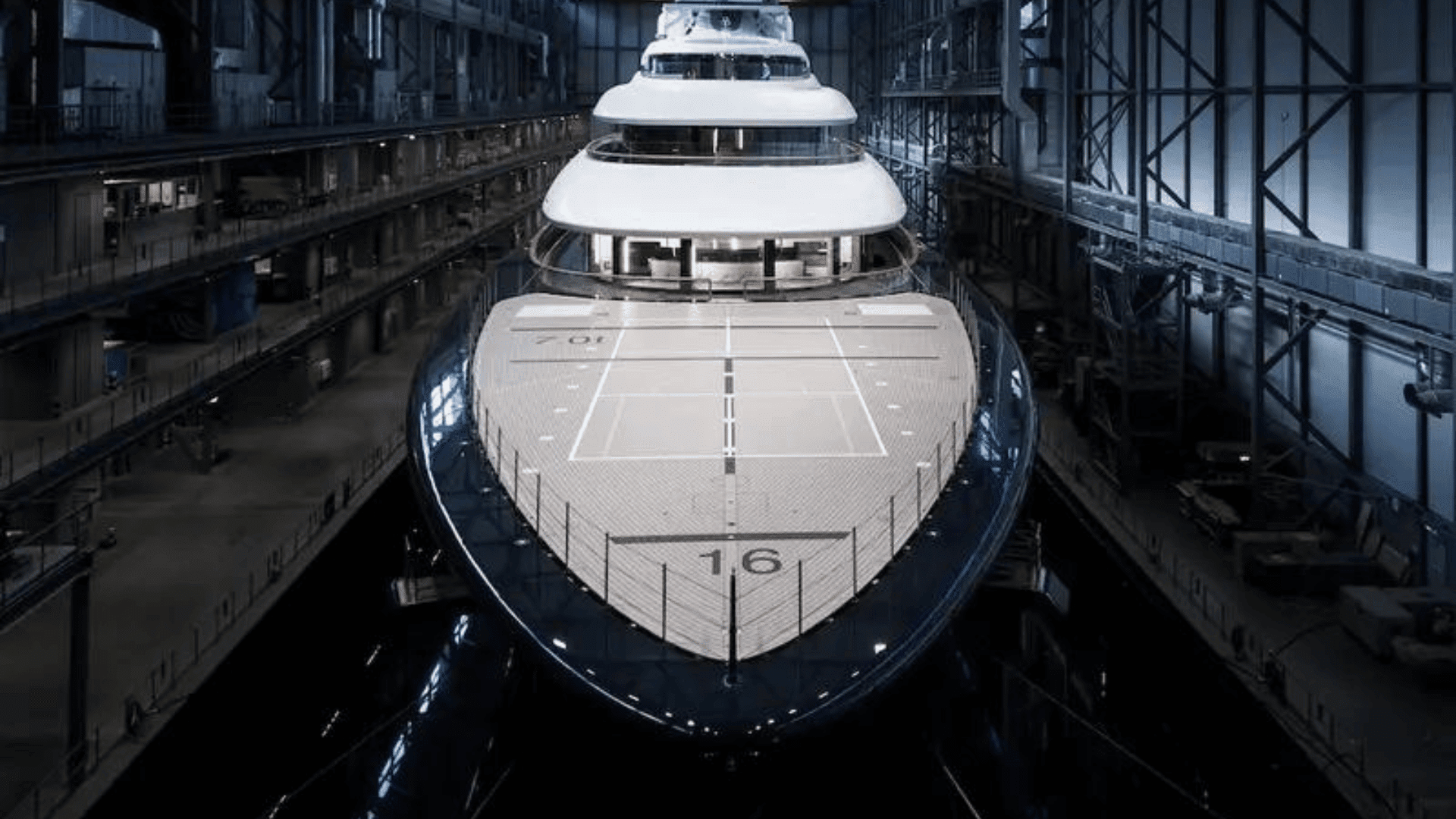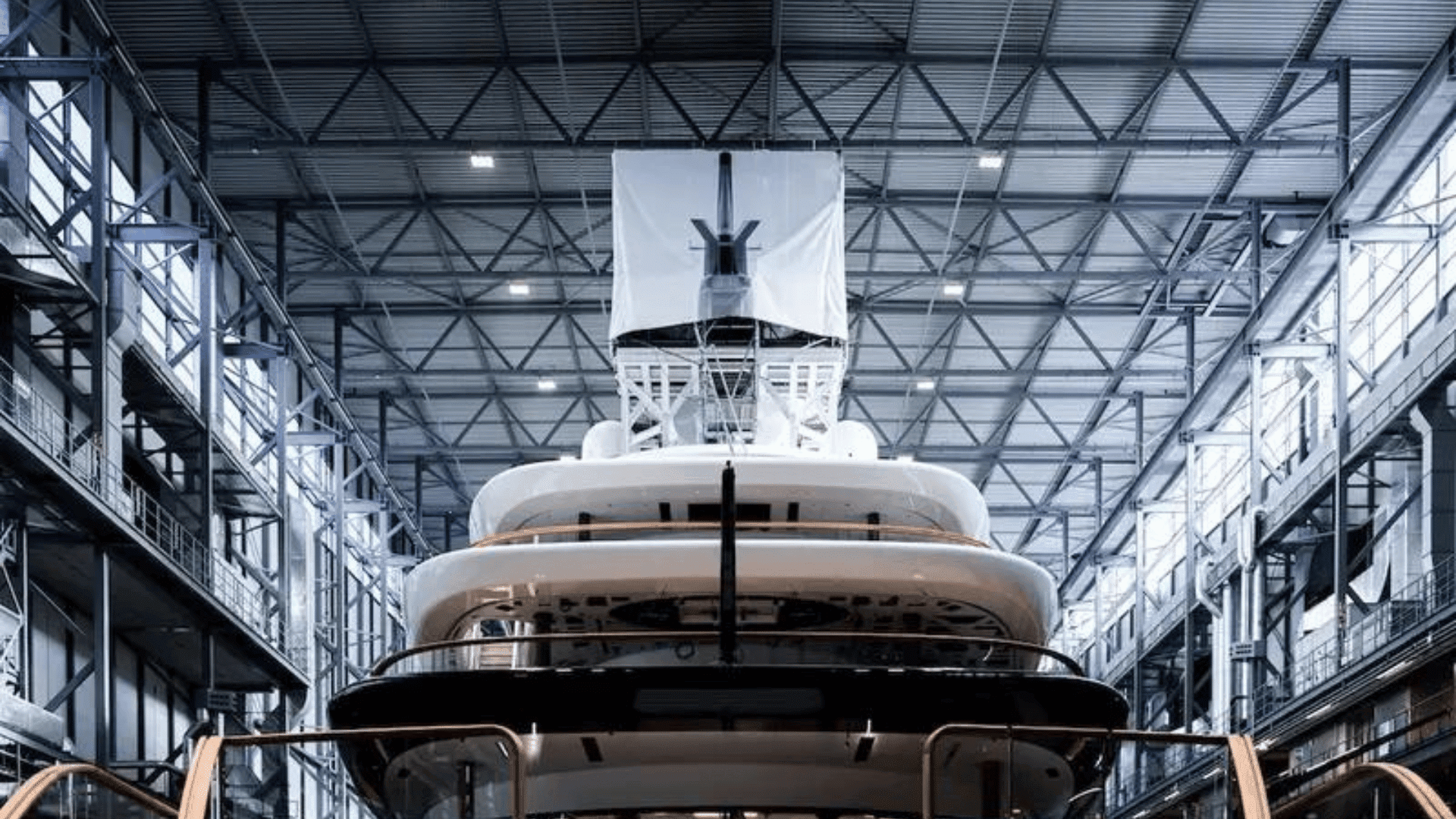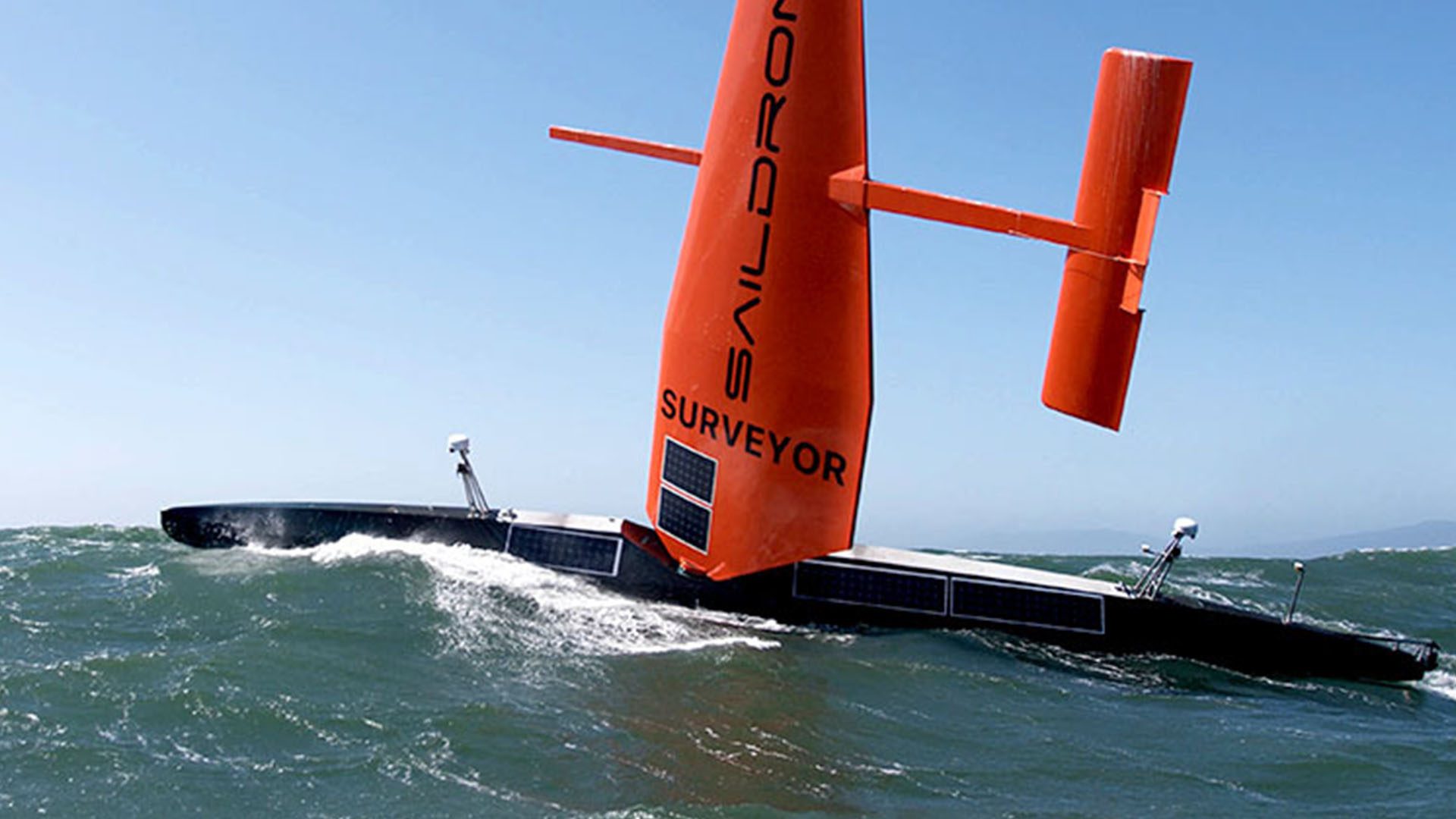To combat carbon emissions from massive boats, designers are creating Project 821, billed as the world’s first hydrogen fuel cell superyacht.

Announced by Danish shipyard cooperative Feadship, Project 821 is the cumulation of five years of design and construction. The zero-diesel boat measures almost 400 feet long and operates its hotel and amenities with emissionless hydrogen power.
Hydrogen cells generate power by turning extremely lightweight liquid hydrogen into electricity stored in lithium-ion batteries. However, unlike fossil fuel engines, which emit smoke and other pollutants, hydrogen cells only emit water vapor.
Designed by British studio RWD, this ship uses hydrogen to power the propulsion system and hotel. Recent advancements have allowed designers to integrate the green alternative into planes, cars, and boats.
Although lightweight, liquid hydrogen must be housed in large, double-walled -423.4 degrees Fahrenheit cryogenic storage tanks within a dedicated section of the vessel. According to Feadship, liquid hydrogen requires 8-10 times more storage space for the same amount of energy created by diesel fuel.

Explore Tomorrow's World from your inbox
Get the latest science, technology, and sustainability content delivered to your inbox.
I understand that by providing my email address, I agree to receive emails from Tomorrow's World Today. I understand that I may opt out of receiving such communications at any time.
The vessel also requires 16 fuel cells, a switchboard connection for the DC electrical grid, and water vapor emission vent stacks. This combination of factors involved adding an extra 13 feet to the vessel’s original specifications, but the increase in size worked well for a superyacht.
The superyacht has five decks above the waterline and two below it, 14 balconies, and seven fold-out platforms. These include a pool, jacuzzi, steam room, two bathrooms, two bedrooms, gym, living room, library, gym, pantry, fireplace-equipped offices, and a walkaround deck.
It may be emissionless, but Project 821 cannot yet store enough power to complete standard-length voyages. According to Feadship, the ship can handle an “entire week’s worth of silent operation at anchor or [briefly] navigating emission-free at 10 knots while leaving harbors or cruising in protected marine zones.”

The ship features an advanced energy management system that also helps to reduce power usage onboard. When hydrogen isn’t an option, MTU generators running on HVO biofuel will send power to the 3,200 kW ABB pod drives.
Though a superyacht can be seen as an unnecessary luxury, if it continues to be used, this solution would allow for extravagance without emissions.
“We have now shown that cryogenic storage of liquified hydrogen in the interior of a superyacht is a viable solution,” Feadship Director and Royal Van Lent Shipyard CEO Jan-Bart Verkuyl said in the recent announcement, “Future innovations on fuel cells and onboard reforming of methanol are on the near horizon.”







